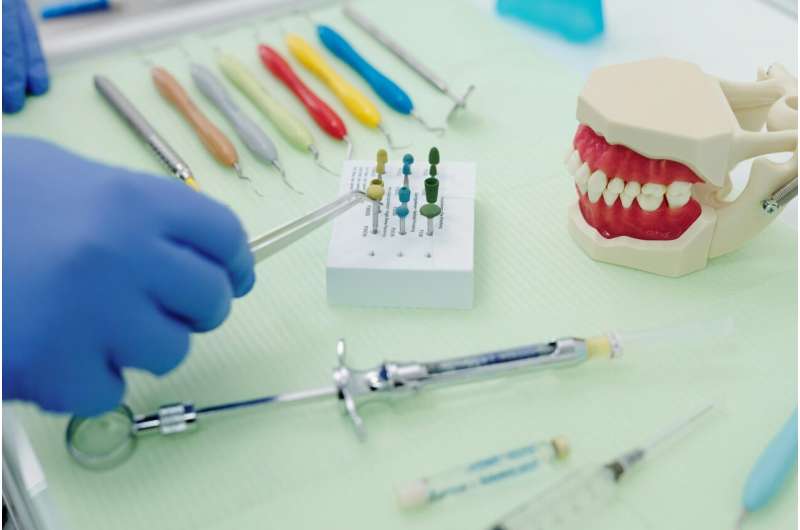This article has been reviewed according to Science X's editorial process and policies. Editors have highlighted the following attributes while ensuring the content's credibility:
fact-checked
peer-reviewed publication
trusted source
proofread
Altered blood markers detected in individuals with periodontitis

Individuals with periodontitis have altered concentrations of various proteins in their blood, according to a new study from Umeå University, Sweden. These findings pave the way for research into biomarkers for periodontitis and the underlying causes of the disease. Severe periodontitis affects about one in 10 Swedes and, in addition to tooth loss, can also be linked to other diseases.
"By identifying the blood biomarkers that may be crucial for the development of severe periodontitis, we can proceed to research drugs that specifically aims to slow down the disease progression," says Pernilla Lundberg, periodontist and professor at the Department of Odontology at Umeå University, who led the study.
The study is published in the Journal of Dental Research.
Periodontitis involves inflammation of the gums that leads to the breakdown of the supporting tissues around the teeth and can, in severe cases, result in tooth loss. Individuals with severe periodontitis are also more often affected by other serious diseases, such as cardiovascular disease and rheumatism, but the mechanisms behind these connections remain unclear.
Researchers at Umeå University have now shown that individuals with periodontitis exhibit a unique inflammatory protein profile in their blood. The findings indicate, among other things, that severe periodontitis is associated with significantly reduced levels of a protein called EGF (epidermal growth factor), which is crucial for wound healing.
The levels of a protein associated with cardiovascular disease, OLR-1 (oxidized low-density lipoprotein 1), are also significantly lower in individuals with severe periodontitis compared to healthy individuals.
Today, one in 10 Swedes suffers from severe periodontitis, a number that has remained unchanged since the 1970s, despite extensive efforts in preventive dental care and a marked improvement in overall dental health. Currently, there are no methods to predict which individuals are at risk of developing severe periodontitis.
"Thanks to the large number of participants in the study, the results are highly accurate, and we can use the material to continue finding more clues," says Pernilla Lundberg.
Previous research has shown that there is a strong hereditary component behind periodontitis, but the specific genes involved are still unknown. The researchers at Umeå university are now analyzing DNA from all participants in the study to identify genetic changes that may be linked to the development of severe periodontitis.
By combining genetic and biological markers for periodontitis, it may become possible in the future to identify individuals at high risk of developing the disease. This would also enable tailored treatments that target the specific factors crucial for the development of periodontitis and the associated disease risks.
The current study, PerioGene North at Umeå University, is based on extensive data collected from approximately 1,000 individuals within the Public Dental Service in the County counties of Västerbotten and Gävleborg between 2007 and 2019.
More information: M. Wänman et al, The PerioGene North Study Uncovers Serum Proteins Related to Periodontitis, Journal of Dental Research (2024). DOI: 10.1177/00220345241263320





















